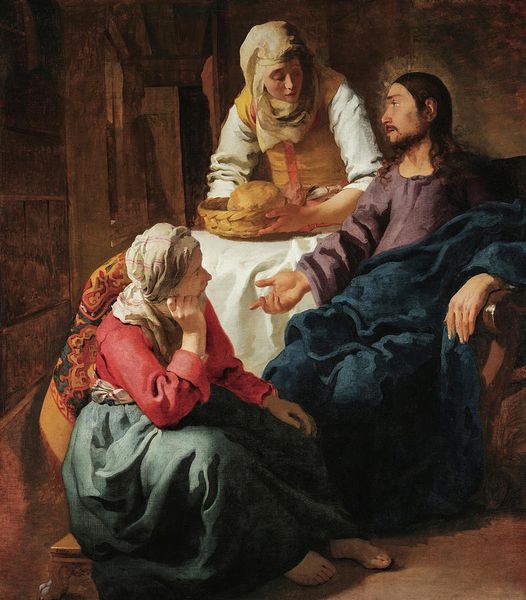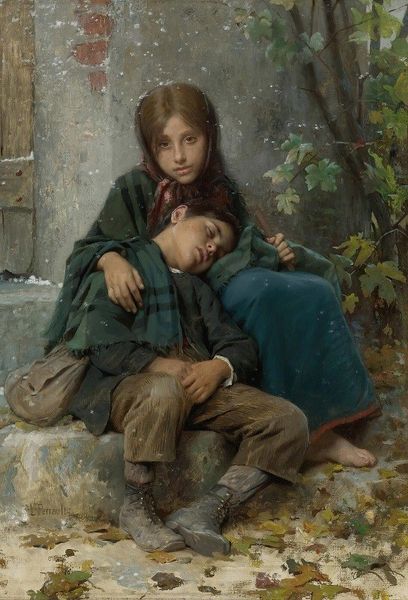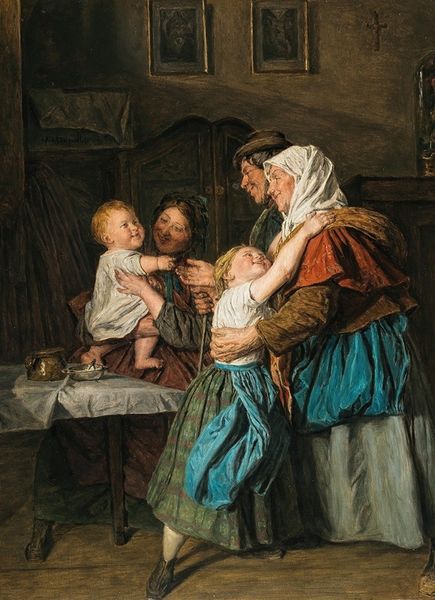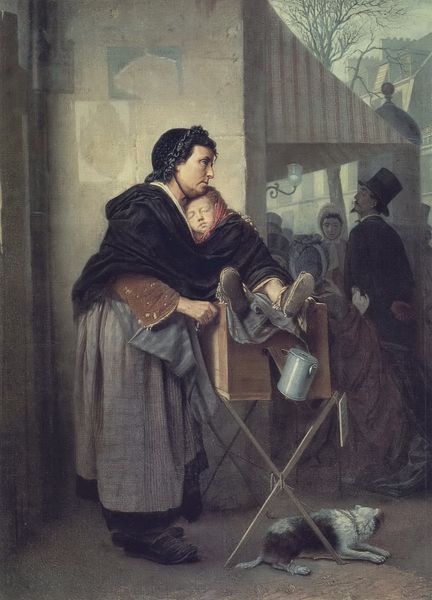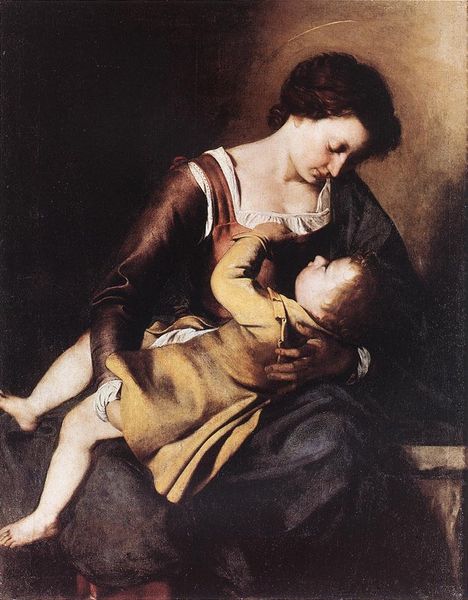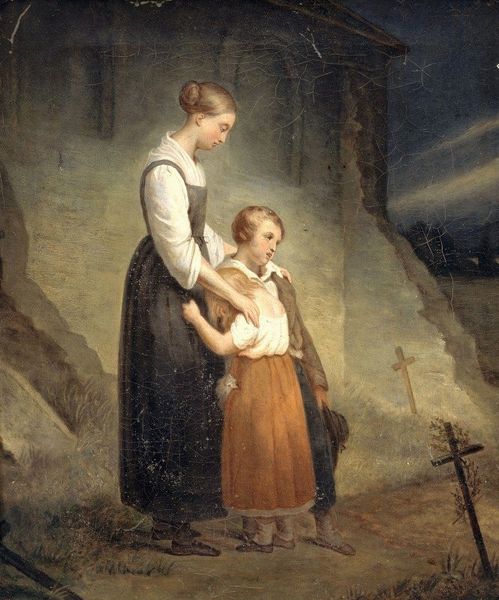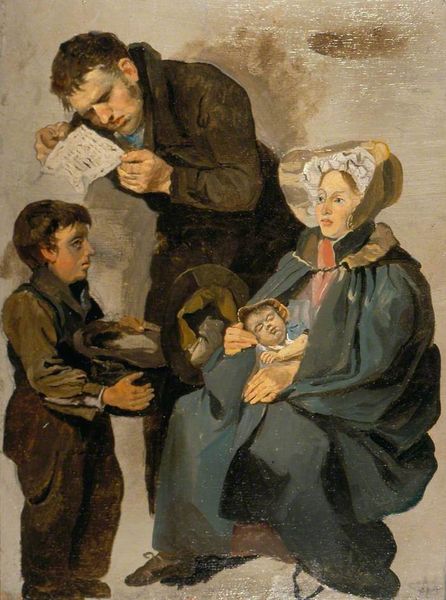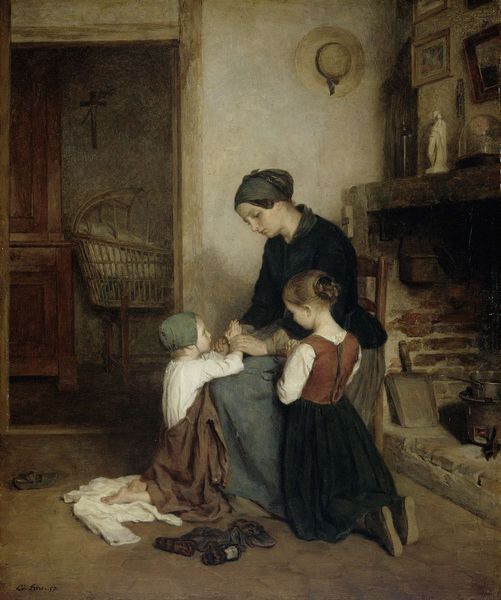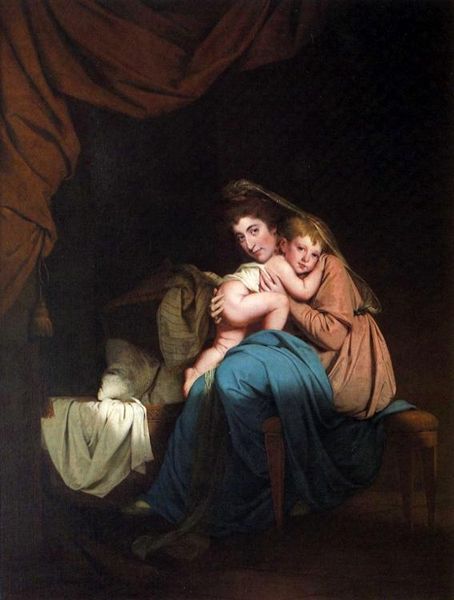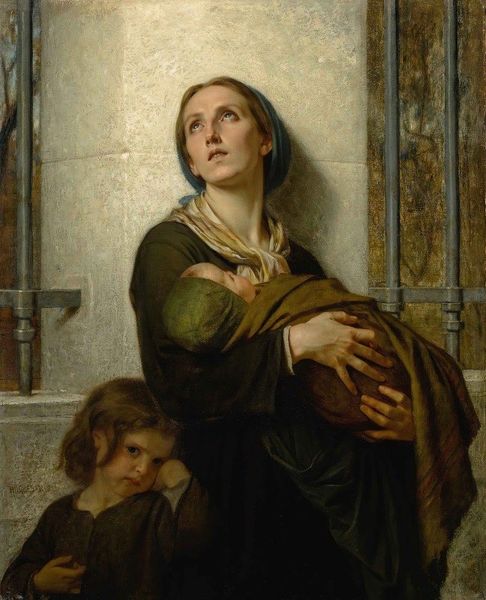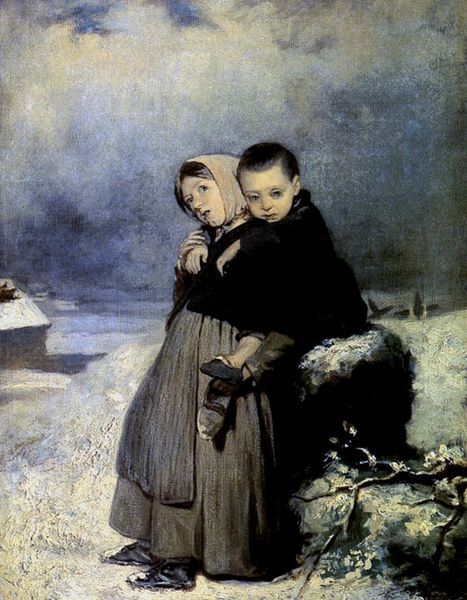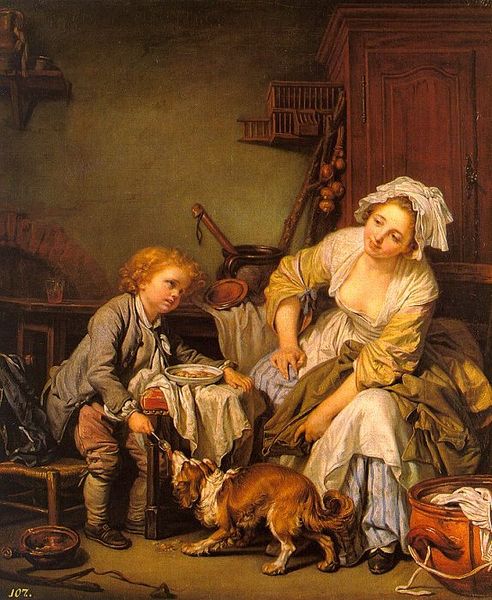
Copyright: Public domain
Curator: Alexandre Antigna's "The Death of the Poor," created in 1859. It’s an oil painting of a scene of familial grief and impoverishment. Editor: Immediately, the somber tonality strikes me. Earthy browns and greys dominate, emphasizing the destitution portrayed. The raw, almost coarse brushstrokes on the walls particularly add to that feel. Curator: Antigna made a deliberate choice to use a muted palette, characteristic of the Realist movement's shift to social commentary and away from idealizing romantic visions. What statements like this were doing in exhibitions caused quite a stir. Editor: Exactly! You see this almost documentary style with how the textures create form. Look at the spoon dropped on the floor – not staged, purely utilitarian. How the everyday object conveys their condition as surely as the human subjects in this history painting. It adds so much weight to the human elements here. Curator: And considering the sociopolitical atmosphere of the time, these unflinching depictions of the urban underclass served as a powerful statement of intent. It challenged the dominant artistic tastes of the Second Empire, creating room for artists like Courbet and Millet to receive recognition in similar works, sparking significant societal reflection. Editor: Agreed. This piece challenges notions of artistic beauty by focusing on lived reality. Note the composition: the almost tangible weight of grief seems heavy with that muted green and turquoise fabric, drawing your eye up from the dead man's face through the living sufferers. There's an artful composition present despite it’s apparent rawness and "everyday-ness." Curator: That compositional technique is very effective in influencing public sentiment. By presenting intimate and unglamorous views of those struggling financially, Antigna prompts viewers to consider social inequality and empathize with these unseen segments of French society during a time of relative wealth, highlighting society’s moral responsibilities toward its most vulnerable. Editor: Ultimately, for me, this painting isn't just a visual statement of loss and poverty, it's an ode to human resilience, visible even through grief and hardship. Curator: It shows how paintings played a key part in societal development at this point in time; they began making people consider what changes should be done on a societal level.
Comments
No comments
Be the first to comment and join the conversation on the ultimate creative platform.
